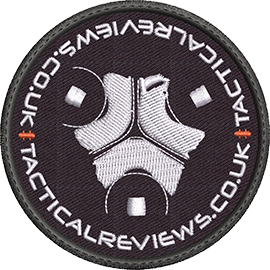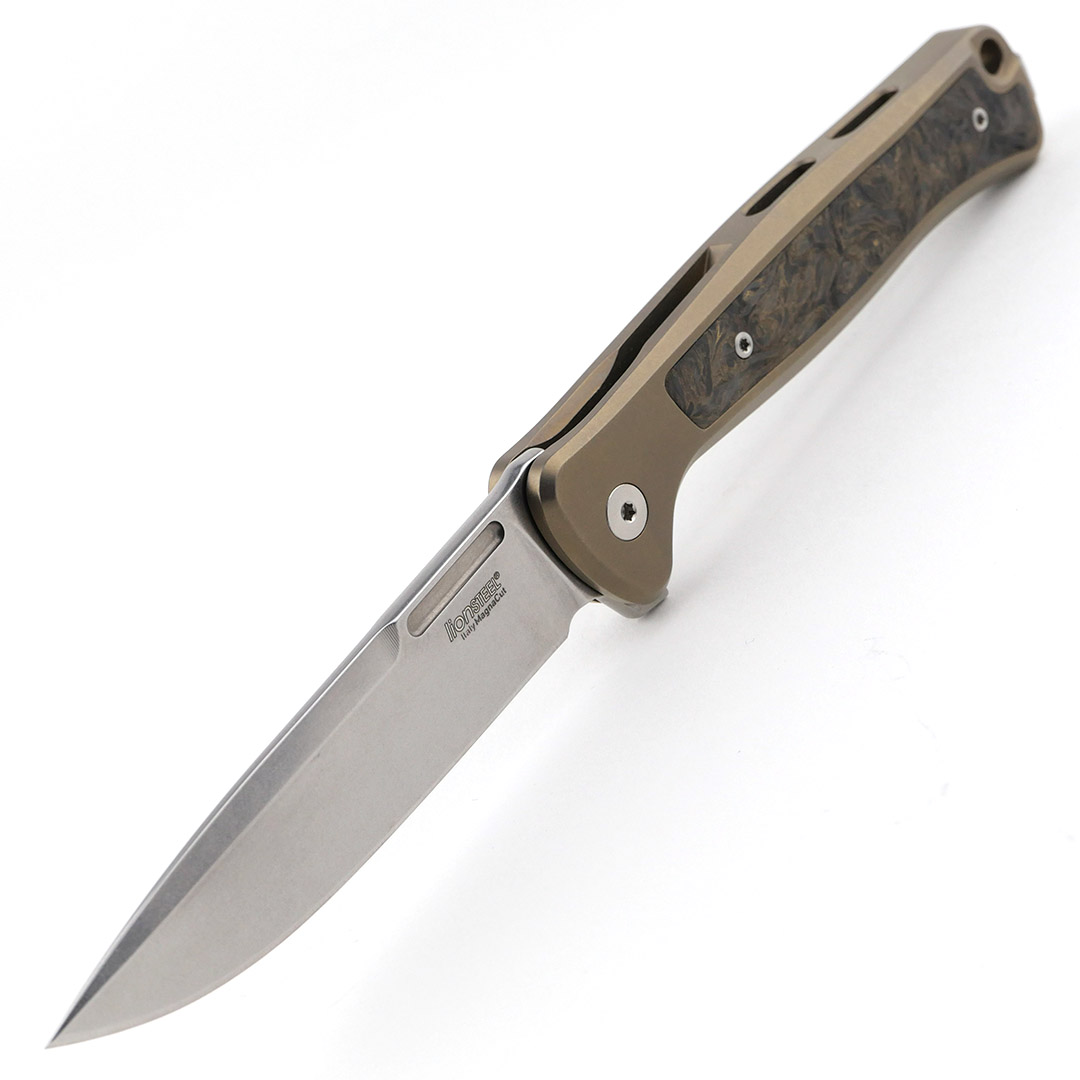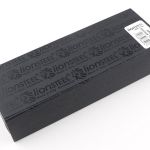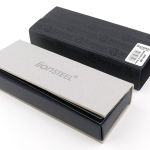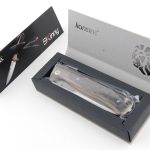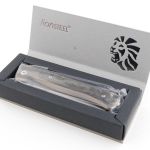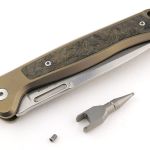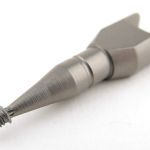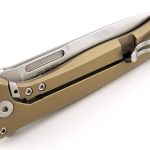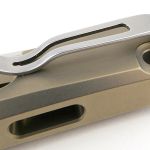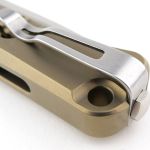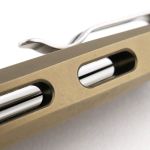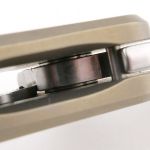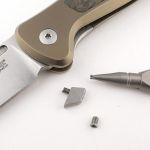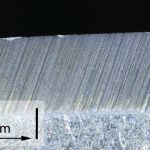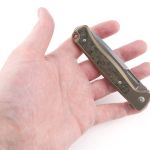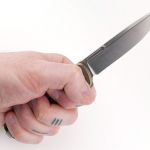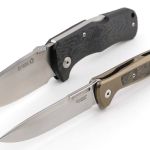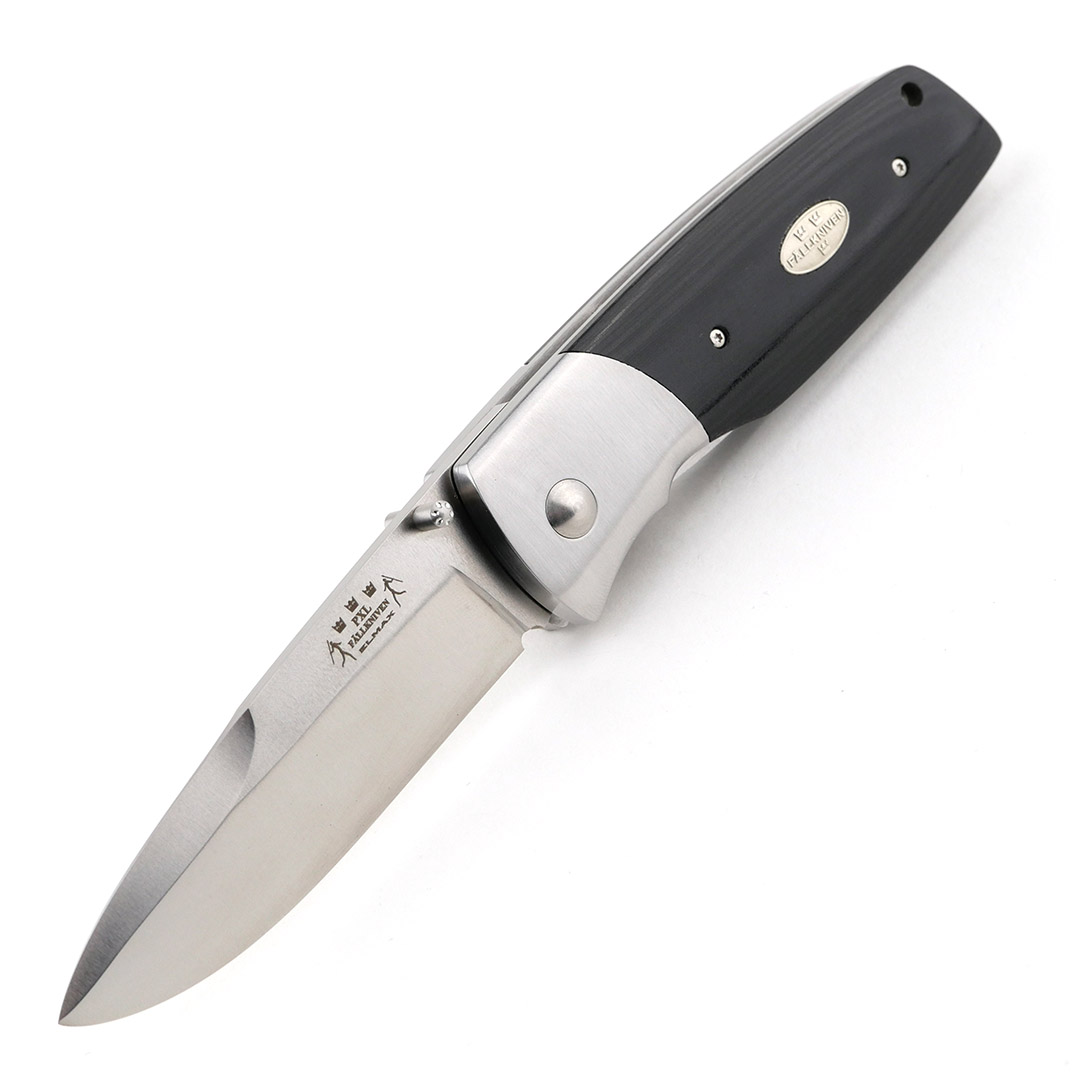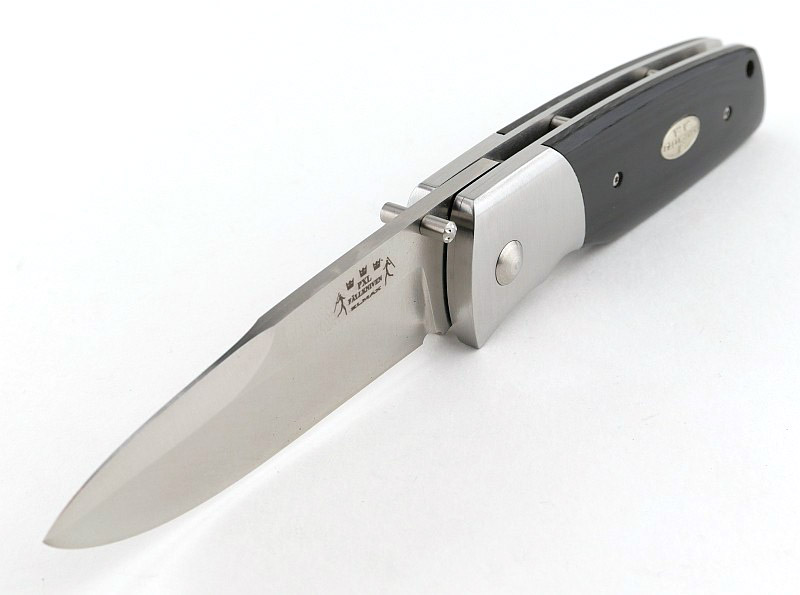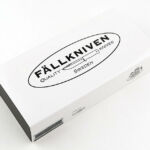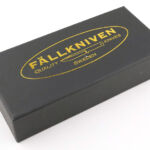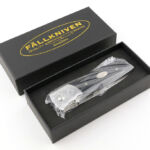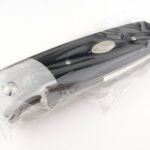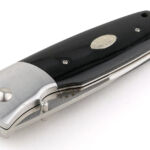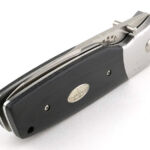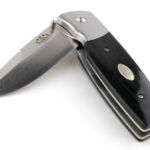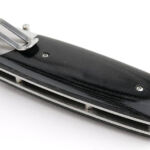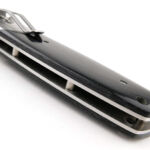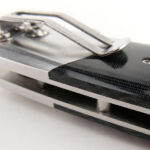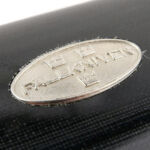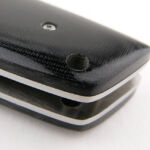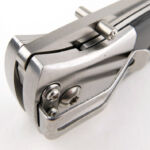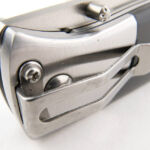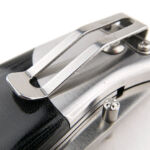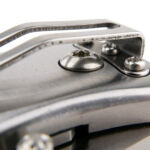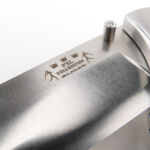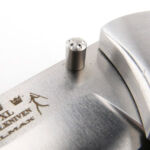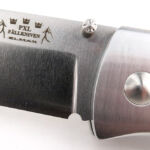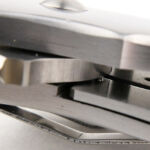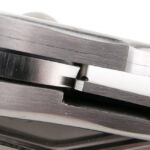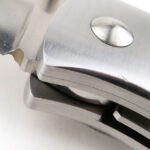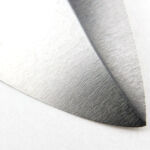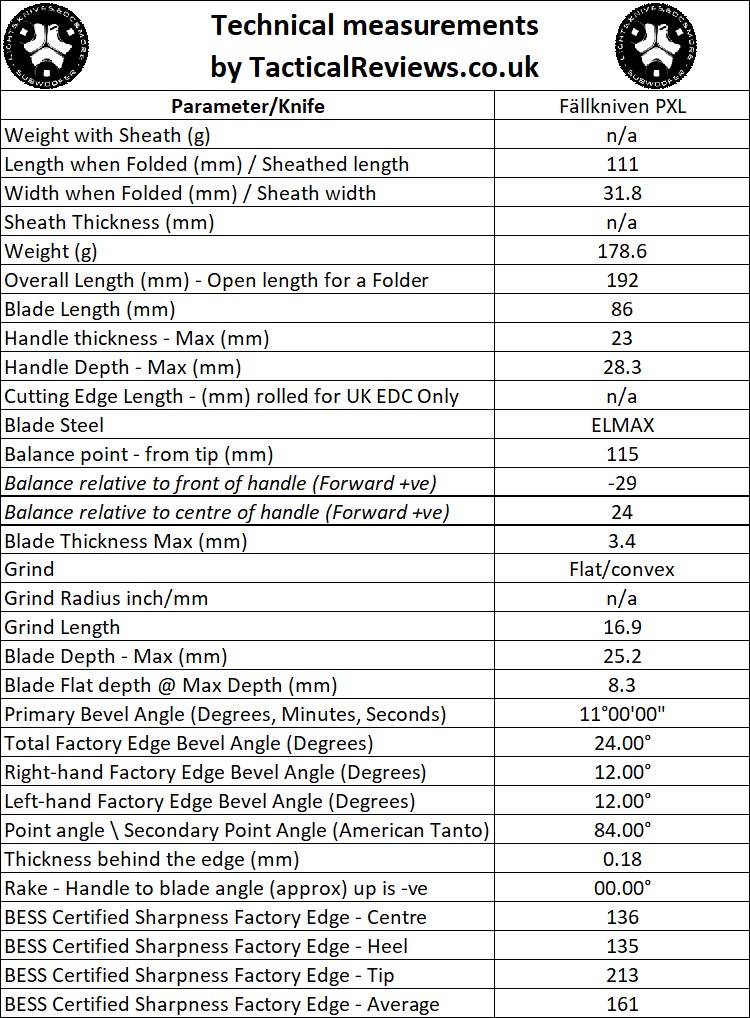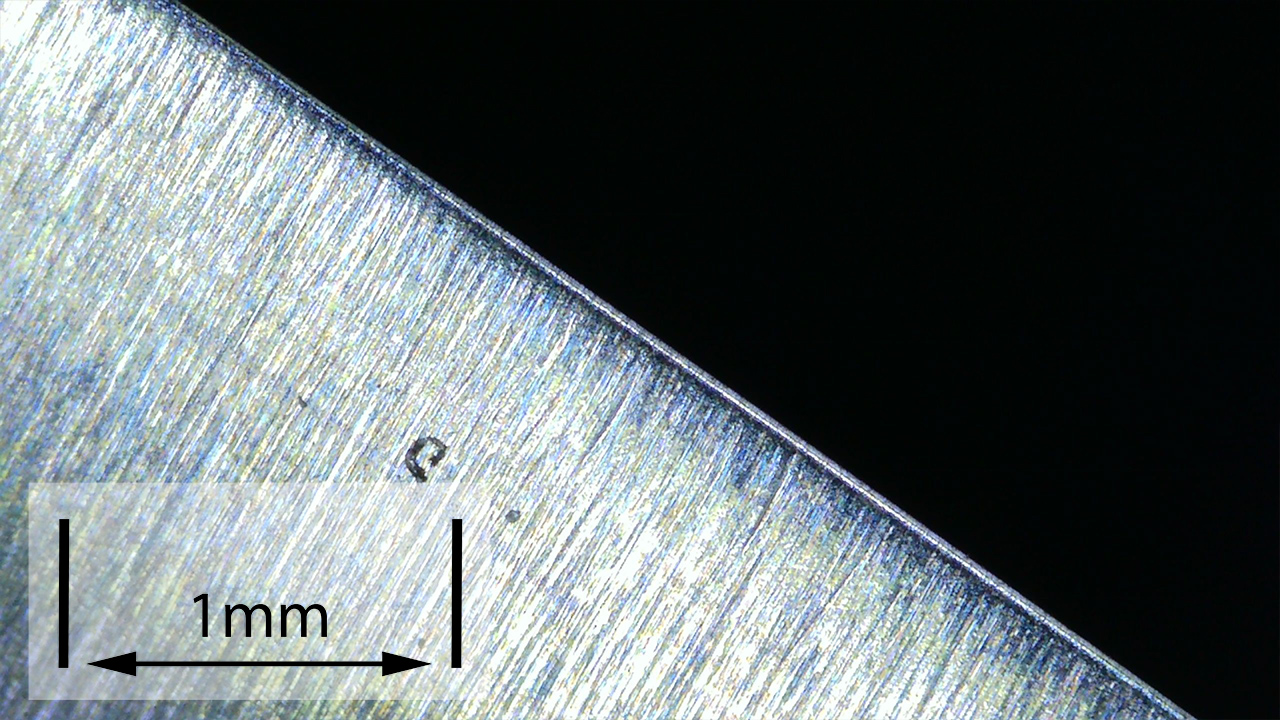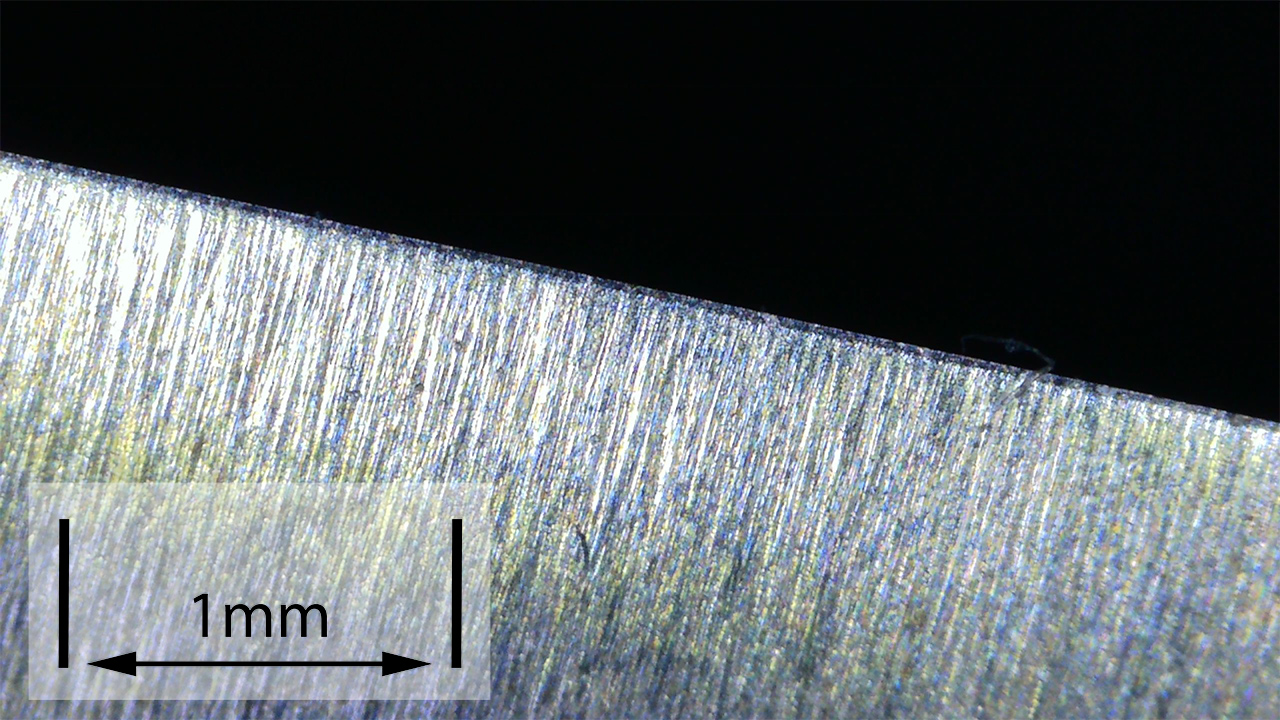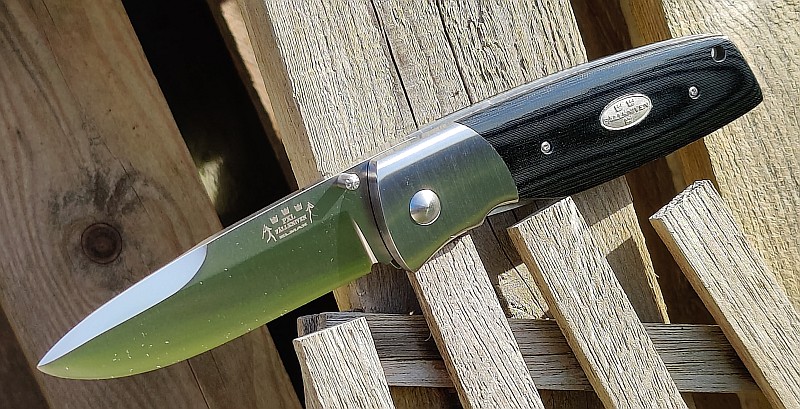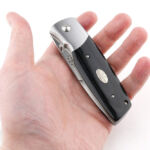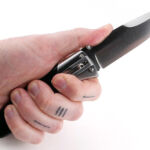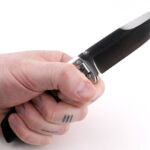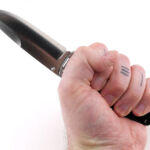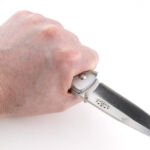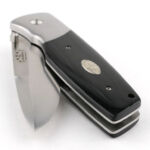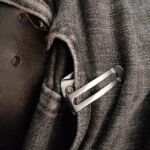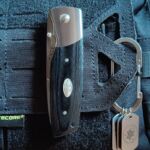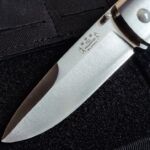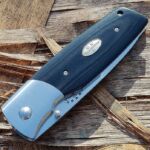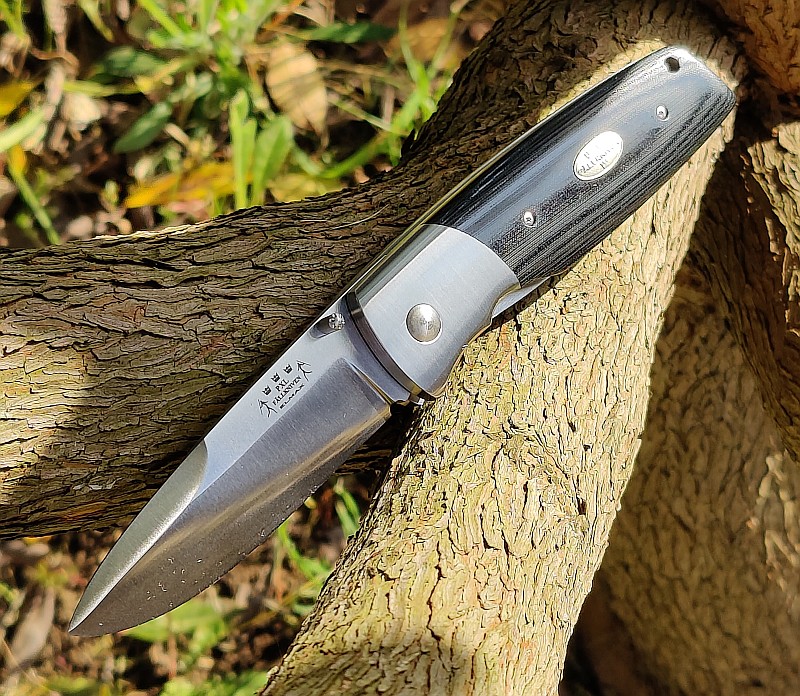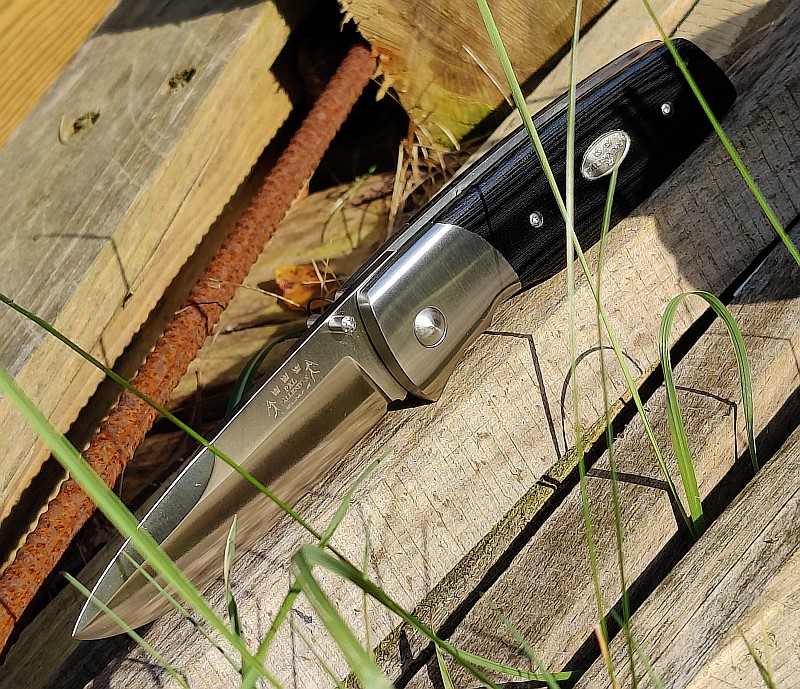Join me in this lionSTEEL Skinny review (new for 2024), to take in all the details of this EDC folding knife. Made using lionSTEEL’s SOLID technology: the frame is made by milling a single solid piece of titanium or aluminium, producing a handle that is incredibly strong.
Skinny is very light and strong with the benefit that it fits into the pocket easily. Featuring a CPM MagnaCut steel blade in either stonewash or OldBlack finish.
The specific knife featured in this review was a display model used throughout IWA 2024, so might show a few imperfections.
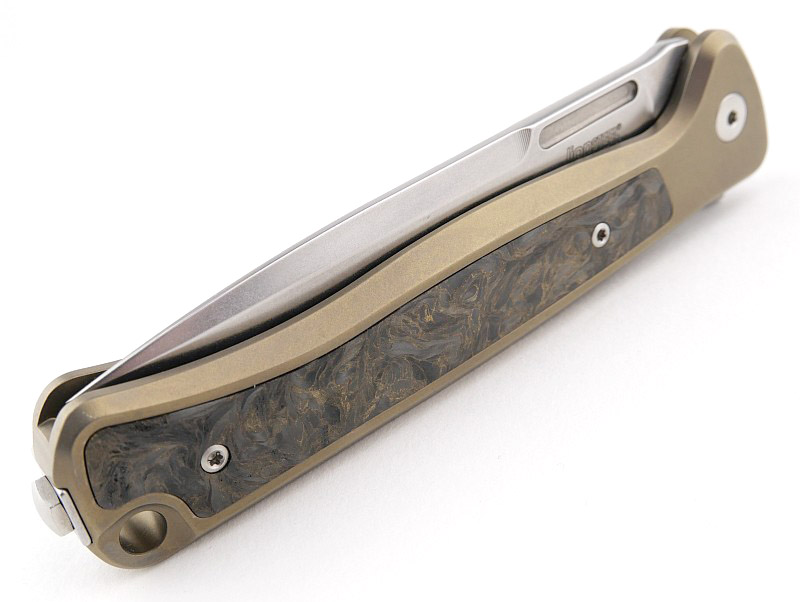
What’s in the box?:
lionSTEEL use packaging like this for many of their folders. Made out of cardboard, but constructed so that it has structure and substance, and becoming more like a case than simple box.
Inside this box are the Skinny and a small bag containing the U-Tool and a blanking screw. The U-Tool includes a spanner to fit the pocket clip bolt and a torx bit for the removable flipper tab (and fitting that blanking screw).
A good look round the Skinny Part 1 – the handle – Things to look out for here are:
For the detailed galleries I’ve split this into three parts to cover a main overview of the folded knife, then with the blade open and details of the blade, and finally the REF (Removable flipper) system.
Skinny is a Molletta design, and has a deep carry steel pocket clip which can be fitted on either side of the frame using the “U-Tool” included in the box.
The handle is a lionSTEEL SOLID (milled from one single piece of titanium). In this version it has a Fat Carbon inlay on one side (and the integral lock bar on the other side).
A good look round the Skinny Part 2 – the blade – Things to look out for here are:
Pivoting out the long and slim MagnaCut blade really explains the reason for the knife’s name. Despite being slim, the Skinny is still a good sized knife overall and doesn’t feel ‘slight’.
The lock bar is reinforced with a hardened steel insert with an over travel stop, and the blade pivots on an IKBS ball bearing.
A good look round the Skinny Part 3 – the REF (Removable flipper) system – Things to look out for here are:
The Skinny is equipped with the lionSTEEL REF (Removable flipper) system, so if you don’t want the flipper you can unscrew the tab using the T6 torx tool and fit the second screw you find in the box to cap off the hole.
This slims the Skinny down even further, and the ‘nail nick’, which is actually a milled slot, then gives you the purchase to grip the blade and open it manually.
The Blade and Handle – Detailed Measurements:
For full details of the tests and measurements carried out and an explanation of the results, see the page – Knife Technical Testing – How It’s Done.
The blade is made from MagnaCut steel.
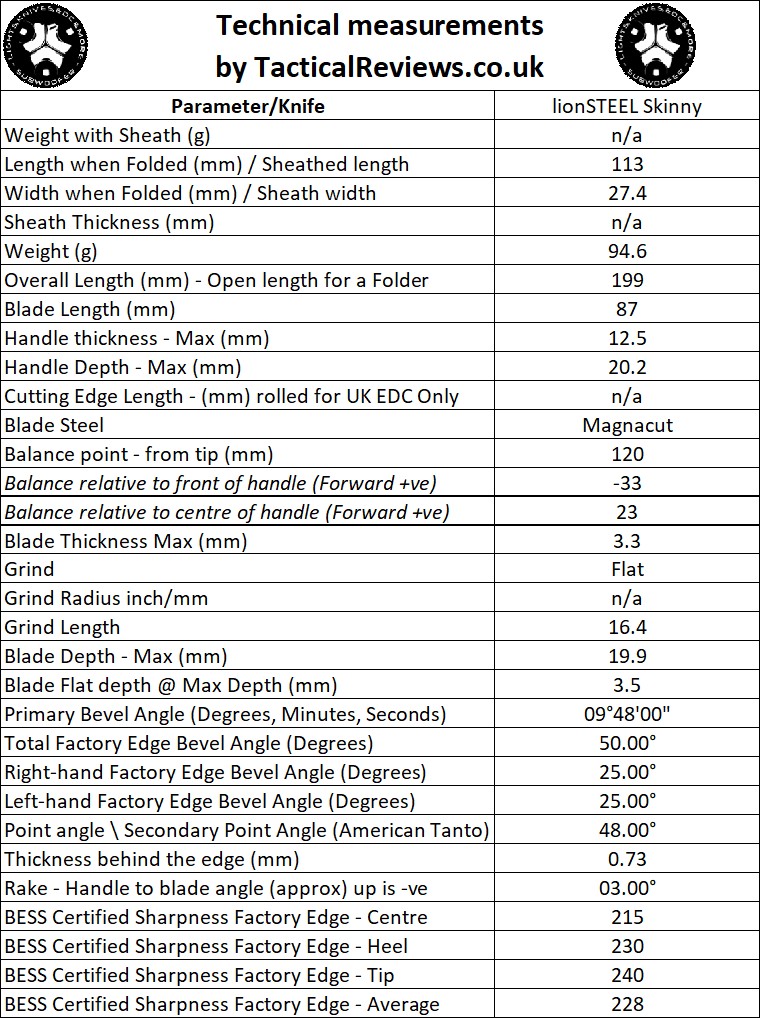
The Factory edge up close:
Followers of Tactical Reviews will know my views on factory edges, but to recap:
Anyone using a knife will need to sharpen it. That first factory edge is just like the first tank of fuel that a new car comes with (or first charge of the battery).
A good factory edge is a ‘nice to have’ but not a ‘make or break’ for a good knife, as you will be putting your own edge onto it soon enough.
The factory edge does however indicate the care a knife maker has put into the final finish.
It is for this reason Tactical Reviews measures factory edge sharpness and specifications, and includes this information in the detailed technical testing.
As a further look at the factory edge, this section has been added to include some high magnification photos of the factory edges.
Remember this was a demo knife at IWA 2024, so in a couple of these photos you can see some handling related edge damage, which you would otherwise not expect to see on the factory edge. It is shown out of interest that the edge damage is in the form of rolls and not chipping.
What is it like to use?
lionSTEEL are well known for their overbuilt folders including the TM-1 shown in the gallery for comparison. The Skinny is just as long as these larger folders, but significantly slimmer. This makes it so much easier to EDC, as it becomes very low profile in your pocket.
Shown here (in a hand taking an XL size glove), the Skinny is still a good sized knife and handles well. The fine blade is quite ‘pointy’ and is well suited to deep piercing cuts. One of the advantages of flipper tabs is that they act as a finger guard during use. This is true with the Skinny, but the shaped handle also incorporates a finger guard, so that even with the REF removed, grip and safety are not affected.
There are a couple of minor criticisms/observations that I’ll mention. The pocket clip, when mounted on the lock bar side, unfortunately lines up with the edge of the lock bar spring cut out. When you try to push the Skinny over the edge of your pocket, the cloth is pushed into lock bar spring cut out and jams, not allowing the clip to slip onto the pocket edge. This only affects fitting it to your pocket, not taking it out, and only when the clip is on the lock bar side. I have fitted the clip to the inlay side.
Shorter than most clips, the Skinny’s deep carry pocket clip is however, just right for grabbing the top edge of your pocket securely; no need for more, it is just right.
Something I have never experienced with any other integral lock folder, and that I believe has been noticeable with the Skinny only due to the slim handle and slim lock bar (perhaps the lock bar tension), was a squeak and vibration that could be felt when opening and closing the blade slowly.
A tiny drop of oil where the lock bar detent rides on the side of the blade immediately stopped this and it become slick again, but over time this does need a further drop of oil. Using a precision watch maker’s needle oiler allowed a very targeted application.
The final image here marks the end of an uninterrupted 38 years of me being a pescatarian. Friends and followers might know I have a chronic health condition, and with recent fresh inspiration to take a holistic new look of all aspects of my health and possible therapeutic changes I can make, I am taking a significant step by re-introducing meat into my diet.
This is no small change to make after 38 years, so required a ceremony of using a knife with a Magnacut blade, made by my friends at lionSTEEL, to prepare this first meal of meat. Meaningful to me at least, and the reason for including this here.
With the Skinny lionSTEEL have added nicely to their line up with a much slimmer locking folder that is very practical and usable for EDC tasks.
Review Summary
The views expressed in this summary table are from the point of view of the reviewer’s personal use. I am not a member of the armed forces and cannot comment on its use beyond a cutting tool or field/hunting knife.
Something that might be a ‘pro’ for one user can be a ‘con’ for another, so the comments are categorised based on my requirements. You should consider all points and if they could be beneficial to you.
_______________________________________________
What doesn’t work so well for me
_______________________________________________
Pocket edge catches in lock bar spring cut out.
Lock bar tension seems very high.
_______________________________________________
Things I like
_______________________________________________
SOLID construction (one piece handle).
REF (removable flipper system).
Deep carry pocket clip.
MagnaCut blade.
Hardened steel lock bar insert with over travel stop.
Versatile drop-point blade shape.
IKBS bearings
Titanium with Carbon Fibre inlay.
Slim and easy to carry.
Review Videos
Starting with a short format sixty second review:
Onto a full video review covering many more details:
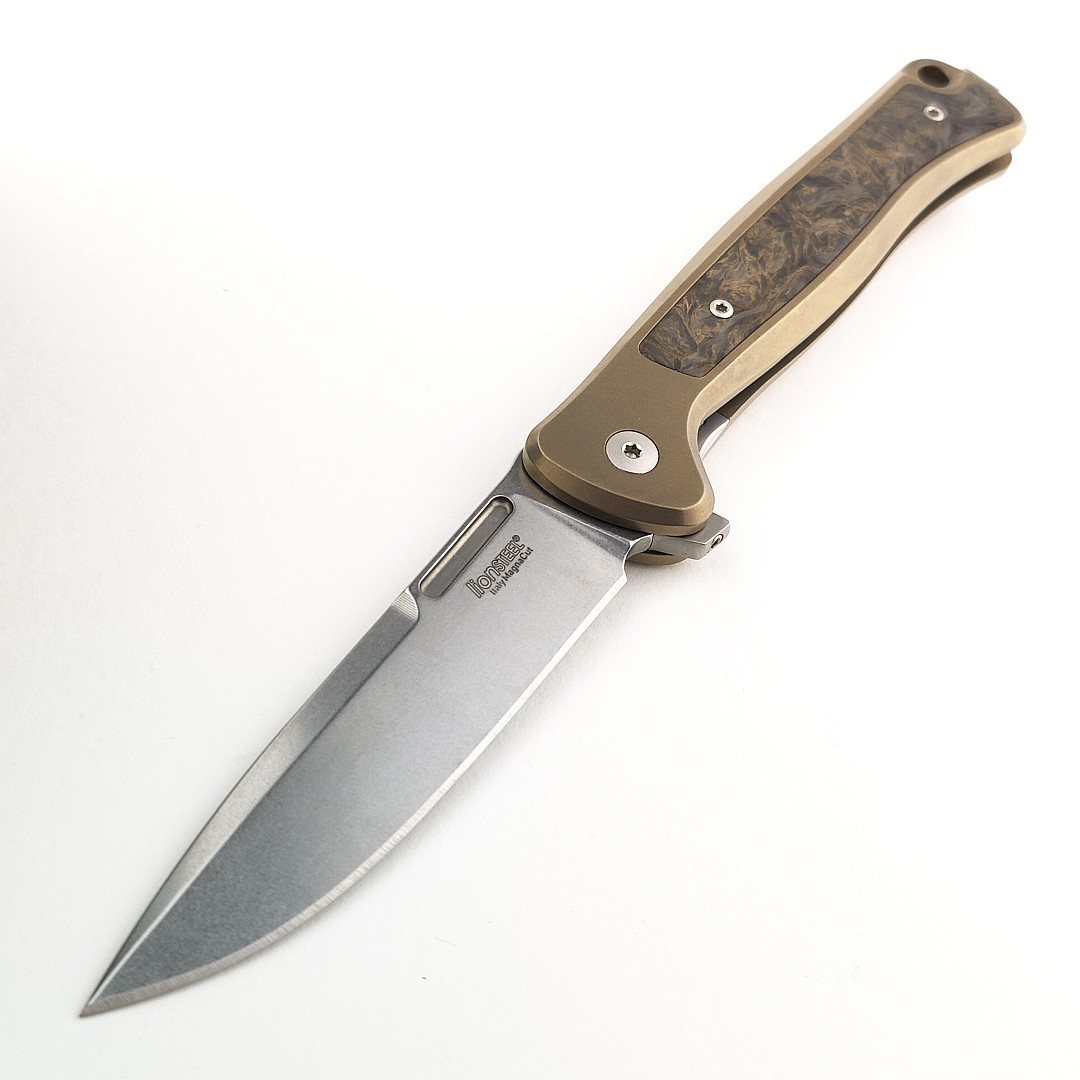
Discussing the Review:
Something new – will it work? A Tactical Reviews Subreddit.
TacticalReviewsChat on Reddit
Please visit there and start/join the conversation.
